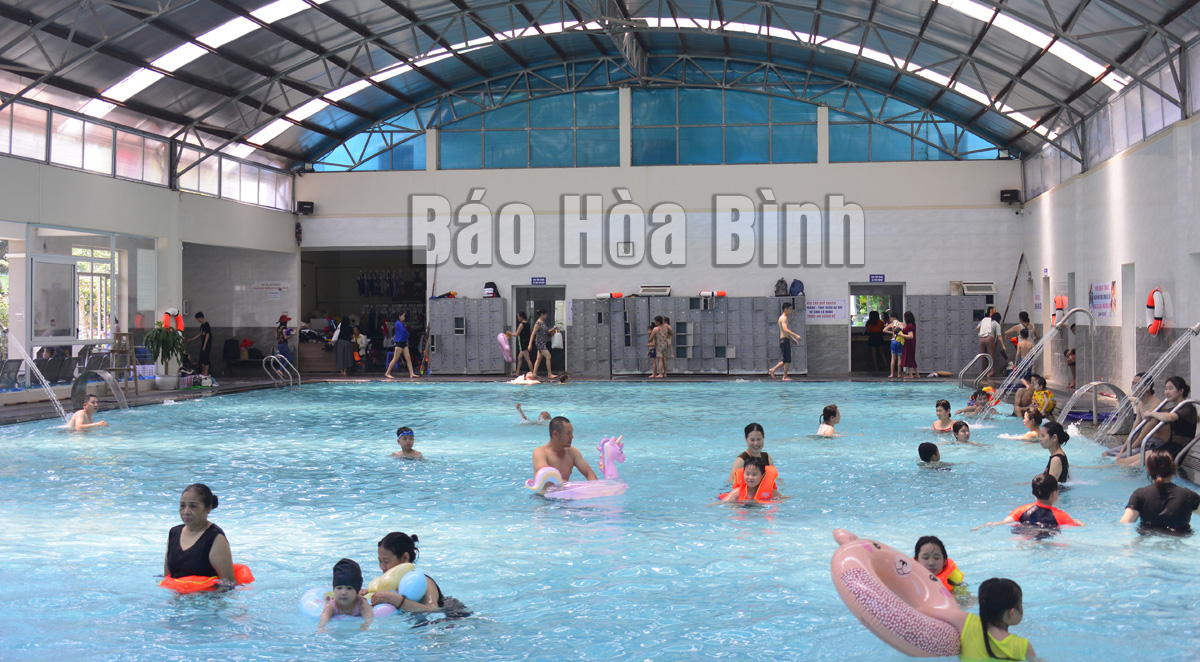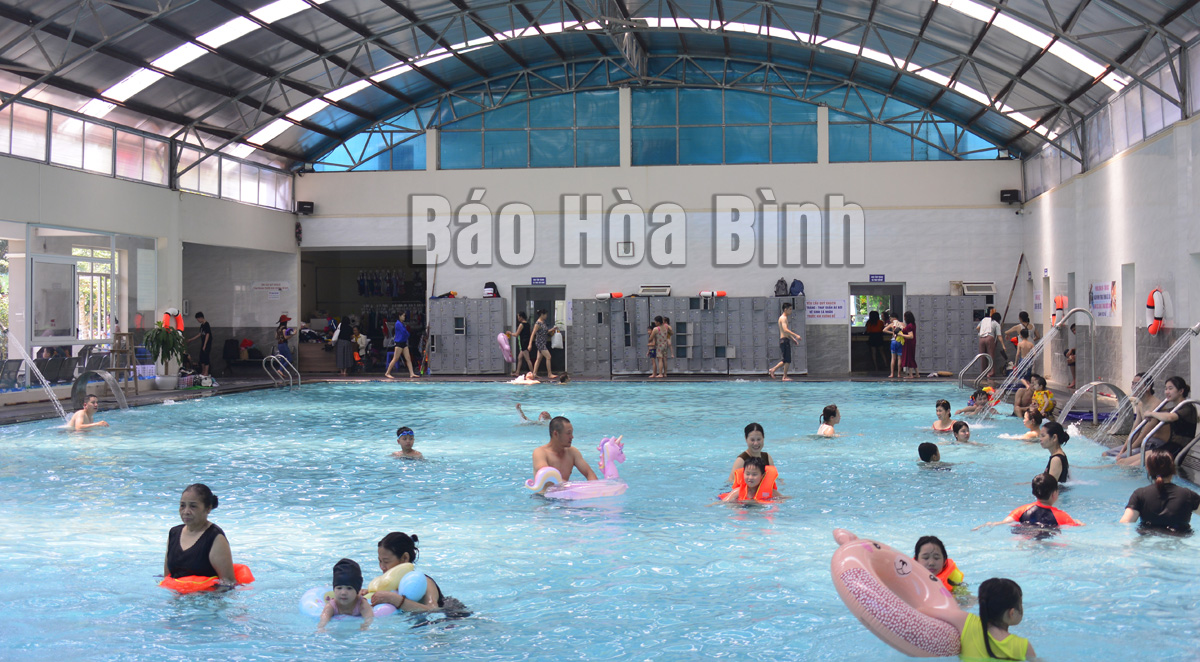
(HBO) – Blessed with mineral water sources considered as "white gold" as well as various natural and cultural landscapes, Kim Boi district has become a key tourism, urban and service area of Hoa Binh.
Currently, the district is working with sectors and agencies
to seek measures in planning and investment attraction, developing tourism
products and building its own trademark basing on its typical potential and
advantages.
Hoa Vien tourism site in Bo township of Kim Boi district has been developed to
meet the entertainment and relaxation demands of visitors.
Pham Thu Huong, a tourist from Dong Da district of Hanoi, said that areas with
hot streams of Kim Boi are favourite destinations of her family with many
choices. She said she found that in recent years, the quality of services and
infrastructure of local tourism facilities has been greatly improved.
For a long time, Kim Boi has remained in the national tourism map as an area
with thousands-year-old hot mineral water sources beneficial for health. Many
tourism facilities have been developed in the locality, including Serena Resort
in Sao village, Dao Bay commune, and Ha Bi hot spring resort in Bo township,
attracting a large number of visitors.
Particularly, the district has attracted many investors who are keen on
developing urban, tourism, service areas and infrastructure in the locality.
Nguyen Thanh Ha, head of the Culture-Information Office of Kim Boi, said that
in recent years, the district has focused on promoting the potential and
advantages of the locality, while creating favourable conditions for
businesses, organisations and individuals to make surveys and register for tourism
investment in the district. A project to promote tourism development in Kim Boi
in the 2020-2025 period with a vision to 2030 has also been implemented
effectively.
Currently, Kim Boi is housing 25 tourism projects, including some large-scale
ones that will be put into operation soon, including Venus Resort, a
tourism-culture-resort complex invested in by Sun Group, and Apec Mandala Sky
Villas Kim Boi.
The district has 46 tourist accommodation facilities, including three resorts,
with a total of 789 rooms.
In the first six months of this year, Kim Boi welcomed 250,000 visitors,
including 1,000 foreigners, earning 180 billion VND (7.6 million USD), said Ha.
At the same time, Kim Boi has worked hard to improve its investment and
business environment and call for large-scale investors, while completing its
infrastructure connecting tourist destinations, enhancing the capacity of local
travel firms, building a tourism database, and linking with other localities to
build tours and eco-tourism products, thus building a tourism trademark for Kim
Boi./.
A diverse chain of eco-tourism and resort destinations concentrated in Hoa Binh city and the districts of Tan Lac, Da Bac, and Luong Son… Along with the launch of several key high-quality resort tourism projects, these developments have reshaped the landscape and enhanced the appeal of Hoa Binh as a travel destination.
Boasting diverse terrain, a mild climate, and rich natural resources, Cao Phong district is increasingly asserting its place on Vietnam’s tourism map, attracting both domestic and foreign visitors. The district is renowned for its stunning landscapes, majestic mountains, a crystal-clear hydropower lake, and the unique cultural identity of local ethnic groups.
With its pristine landscapes, unique cultural heritage of Muong ethnic minority, and an expanding range of visitor experiences, Tan Lac district of Hoa Binh has fast become a captivating destination for both domestic and international tourists.
Until now, Sung village in Cao Son commune, Da Bac district remains the only Dao ethnic community in Hoa Binh province to develop a community-based tourism model. Beyond its untouched natural landscapes, cultural identity serves as the cornerstone attraction for visitors.
Alongside the diverse cultural identities of the Kinh, Muong, Tay, Thai, Dao, and Mong ethnic people, Hoa Binh province is also renowned as the "capital" of the northwestern Vietnamese cuisine, offering unique and distinctive dishes. At festivals, during Lunar New Year (Tet), or on significant family or community occasions, special dishes are prepared, leaving a lasting impression on visitors.
A Phong Linh (Yellow Tabebuia) flower garden in Thang village, Thach Yen commune, Cao Phong district is currently in full bloom, drawing a large number of visitors.



